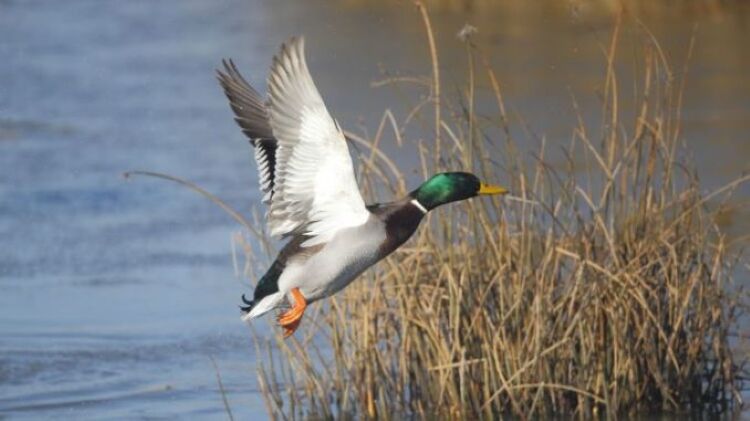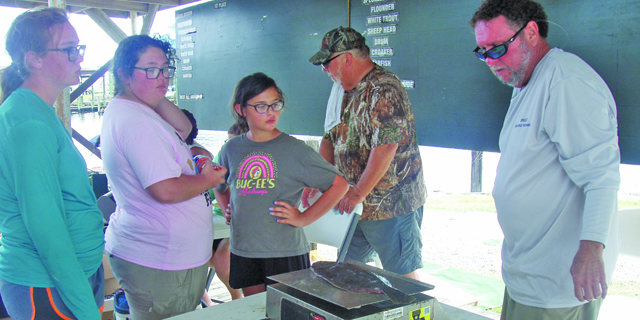As 2022-23 duck hunting starts, less ducks since count began in ’68
Published 6:00 am Sunday, November 13, 2022

- State Department of Wildlife and Fisheries waterfowl biologists counted ducks the week before the hunting season began when they conducted their second aerial waterfowl population survey of Fall 2022. Louisiana''s 2022-23 duck hunting season opened on Saturday in the West Zone.
Before Saturday, Louisiana’s opening day for the 2022-23 duck hunting season for the West Zone, the estimated total number of ducks in the state was the lowest since 1968.
Jason Olszak, the state Department of Wildlife and Fisheries waterfowl program manager, said last week’s aerial waterfowl survey counted a total of 802,000 ducks for coastal Louisiana and Catahoula Lake. The estimate was 38-percent lower than November 2021 (1.29 million) and 28- and 48-percent lower than the most recent five-year (1.11 million) and 10-year (1.54 million) averages, respectively.
Olszak released the second aerial waterfowl survey of the 2022-23 season Thursday night. The state’s waterfowl program manager and his staff conducted the survey on daily flights along transect lines Monday through Thursday.
“Obviously, the lowest count ever stands out,” Olszak said Friday morning soon after climbing down from a tree stand after a deer hunt.
“However, there was far more water on the landscape, especially in southwest Louisiana, that may have spread the birds. That being said, we have been doing the same transects since ’68, so they are comparable year to year.”
Duck hunters can consider themselves lucky to see a single mallard, let alone a brace of mallards, this opening weekend and, perhaps, the rest of the first split in southwest Louisiana. The survey showed 2,000 mallards in southwest Louisiana.
Olszak wasn’t that surprised by the number of mallards, the prized “big duck” on anyone’s lanyard.
“Mallard numbers, you know, have been trending down for a while,” he said, adding mallards are a big, hardy duck and major winter conditions are needed to push them from the Canadian prairies all the way to, say, Vermilion Parish.
Mallard numbers also are down 90 percent from November 2021.
Olszak expected to see more ducks overall on the survey flights, he confided, because in the days leading up to the aerial waterfowl survey he heard glowing reports about duck numbers from waterfowlers getting their duck blinds ready.
The veteran waterfowl biologist said he planned to be in a duck blind near Lake Arthur for Saturday’s opening day of the waterfowl hunting season in the West Zone of the Sportsman’s Paradise.
“I’m going to hunt opening weekend and shoot whatever I have the opportunity for,” he said, noting he had disappointing results last season as did many other duck hunters in the region.
What Olszak saw this past week is less than reassuring for the duck hunting months ahead in the West Zone and East Zone. The most encouraging fact from the latest report is that while the overall estimate was the lowest since 1968, there are no species-specific record lows for November.
And gadwall, green-wing teal, mottled duck and scaup numbers are higher than during the same period in 2021: Gadwall up 21-percent, green wings 20-percent, mottled duck 5-percent and scaup 117-percent.
All other species, including mallards, are down from November 2021: wigeon minus 82-percent, shoveler minus 87-percent, ring-neck minus 96-percent and blue-wing teal minus 32-percent. Also, the blue-wing teal estimate of 171,000 is 24-percent lower than the September survey count of 264,000.
Olszak noted in his report southwest Louisiana’s marsh conditions are improved slightly over November 2021, whereas agricultural fields are improved vastly. Also, he wrote in his report, the region’s marshes continue to be mostly free of non-native, nuisance, floating aquatic vegetation.
Southwest Louisiana’s marshes show above average growth of emerged and submerged aquatic vegetation with water levels normal to slightly above normal.
The report pointed out the increased amount of water available in the agricultural areas was in stark contrast to drought conditions of November 2021. There is much less leveling and tilling taking place and many more fallow and second crop rice fields inundated with shallow water.
Unfortunately for many outdoorsmen who hunt ducks at the Wax Lake Outlet and main delta of the Atchafalaya Delta Wildlife Management Area, the duck count is low. While the popular duck hunting area isn’t on the transect path, the waterfowl biologists make it a point to take a look at it while they’re in the air, Olszak said.
It’s a mystery because habitat conditions there appear favorable every year, he said. After all, it is one of the few areas along the coast that is rebuilding land rather than suffering erosion.
Goose hunters may be disappointed, too. Geese aren’t counted during the flights, Olszak said, except for occasional looks between transect lines, but across the entire survey area only one single flock of 50 white-fronted geese was observed and that was west of Lake Arthur.
Southeast Louisiana’s bright spot was the improved condition of marshes torn up last fall by Hurricane Ida, the biologist noted. Turbidity is signiwficantly lower, emergent vegetation and SAV are widespread and healthy, he reported.
And, as usual, the largest concentrations of ducks in the region were seen at the mouth of the Mississippi River, where habitat conditions were above average and wetland development projects showing noticeable results.
West Zone duck hunting’s first split ends Dec. 4. East Zone duck hunting’s first split starts Nov. 19 and ends Dec. 4.
The second split starts Dec. 17 in the West Zone and East Zone.





